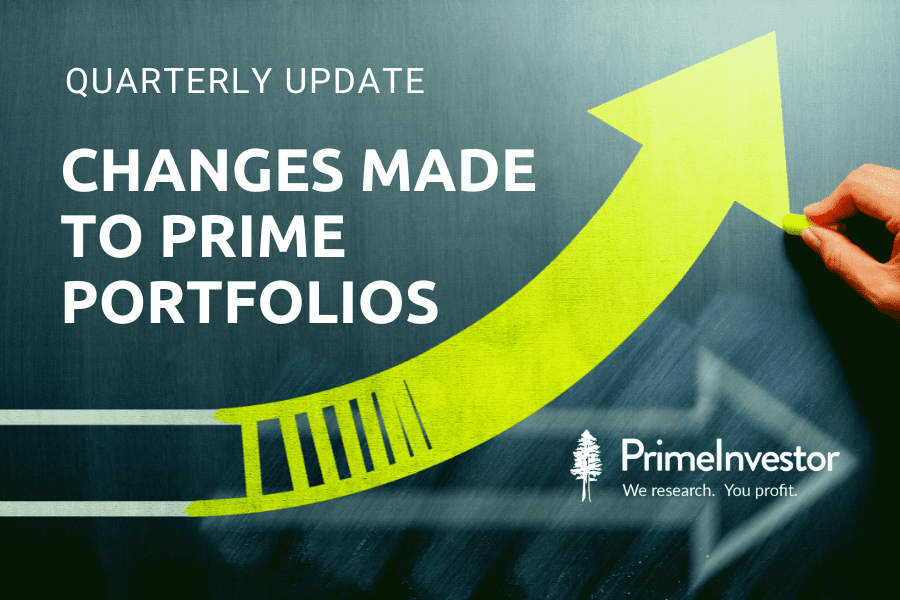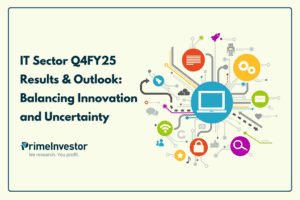Prime Portfolios are a set of 19 unique portfolios that meet over 30 different investor timeframes and needs. Prime Portfolios are listed under Ready-to-use-portfolios in the Recommendations dropdown. These portfolios primarily use mutual funds, but where there are better-suited products such as deposits or government schemes, the portfolios include those as well.
We review these portfolios every quarter and make changes to remove underperformers or to include any new investment opportunity or product that may come by. In this quarter, we have made changes to only one portfolio. However, in two portfolios, we are recommending fund-specific action to streamline the portfolio.

If you are new to PrimeInvestor, do go through the boxed section below on how we construct Prime Portfolios and how you can use it. Else, use the Table of Contents to skip to the portfolio you are interested in.
Construction of Prime Portfolios
We have classified Prime Portfolios based on popular financial needs/goals you may have. The basis for many of these would be the goal’s timeframe. We have therefore segregated many of these goals further into timeframe buckets. For those looking for passive investing options, check the Odds and Ends portfolios.
Fund or instrument selection: Prime Portfolios draw from Prime Funds and mix funds with different strategies to minimize duplication within a portfolio. However, there may be a few cases where funds are outside of Prime Funds. This apart, we use other products, primarily on the fixed income side, in portfolios where they will be good options.
Asset allocation: The asset allocation in Prime Portfolios is done based on the ‘ideal’ allocation for a given timeframe or goal. But this is not cast in stone. Assess your own capacity to take risk before choosing a portfolio. These portfolios are not ‘advisory’ in nature. They are bundled MF products with a mix of equity and debt funds and fixed income options with varying strategies for diversification.
Using Prime Portfolios
Prime Portfolios are useful in the following cases:
- If you are new to mutual fund investing, or don’t know how to mix funds and want a readymade basket of funds to invest.
- If you are an existing investor but have new goals and want an asset-allocated portfolio for that purpose.
- If you wish to build your own portfolio by taking cues from the asset allocation and category allocation that we use.
- If you wish to add or modify your existing portfolios by taking cues from Prime Portfolios’ construction using Prime Funds or MF review tool. You can read this article on building your own portfolio.
If you’re investing in or referring to any Prime Portfolio, note the following:
- We review these portfolios every quarter after the review of our ratings, recommendations, and Prime Funds. So, this will typically be 2-3 weeks after the end of a quarter.
- In the review, where we make changes to Prime Portfolios, we will explicitly specify whether a fund needs to be exited (sold) or only SIPs stopped and investments made so far held. Changes may involve fund changes or individual fund allocation changes.
- In our review reports, we mention only those portfolios where there are actual changes or portfolios to which we wish to draw your attention on any performance. If a Prime Portfolio is not mentioned in these reports, you can assume that there are no changes.
- If you wish to track changes to a portfolio, please click the ‘Follow’ button to ensure you receive alerts about the changes. Your Dashboard will also show you portfolios that have been changed when you Follow a portfolio.
- We send email and Dashboard alerts on changes only for those who ‘Follow’ a portfolio. However, we also publish a report on the blog on the same every quarter, with the detailed reasoning for changes along with action to be taken. Either way, keep note of our emails – at least at the end of every quarter!
- Some asset classes in your portfolio may have strayed from the original asset allocation as market rallies. This is something only you need to run a check (as each of you would have invested in different times) once a year to see whether you need to rebalance. The rebalancing concept is explained in detail in this article on rebalancing, and we have built a calculator to tell you how much to invest/redeem in rebalancing.
- We review and publish a report on portfolio performance since inception at the end of every calendar year.
Essentially, it is important for you to read and record our emails for all of the above. So kindly make sure you find some time to do this to keep your portfolio in good shape!
Changes to Prime Portfolios
5-7 year portfolio
In this portfolio, we are making no changes to the current funds in this review. However, this portfolio has seen returns weighed down significantly by a couple of funds lagging their benchmarks. Our earlier revisions to this portfolio have been towards pruning these underperformers – involving stopping SIPs in some funds and moving to better performers and exiting others. These changes have begun to improve the portfolio’s performance, albeit slowly, against the blended index.
However, DSP Midcap continues to be a severe underperformer. We had stopped SIPs in this fund in the June quarter review. We had a ‘hold’ call on this fund given its sound long-term track record and because its portfolio as such comprised sound companies. However, the short-term improvement that we were seeing in the fund does not appear to be translating into longer-term improvement. The fund continues to lag the Nifty Midcap 150 index by a heavy margin, and this poor performance weighs heavily on the portfolio.
To reduce this impact, we recommend the following:
- Exit fully from DSP Midcap. We understand that part of your investment may be short-term, as we stopped SIPs in this fund only last quarter. You may choose to stagger the exit based on the tax impact you suffer.
- Reinvest in Kotak Emerging Equity. This reinvestment can be done in lumpsum as and when you sell DSP Midcap.
Our intention behind this suggestion is to limit the opportunity loss of being in an underperformer and speed up the narrowing of the performance lag. This leaves Kotak Flexicap as the only other fund in the portfolio where we have a hold call (we had removed this fund in our March 2022 review). The fund has been improving performance of late and has narrowed the gap by which it trails the Nifty 500. There is no action needed on this fund for now.
High Growth portfolio
In this portfolio, we are making no changes to the current funds. However, this portfolio contained the Motilal Oswal Nasdaq 100 Fund of Funds. As you will know, the fund stopped accepting fresh investments in the wake of the mutual fund industry hitting the ceiling on international investments allowed by the RBI. We had replaced the Motilal fund with Kotak Nasdaq 100 Fund of Fund.
At the time, our thought was that these curbs would be lifted in due course and we had recommended continuing to hold the Motilal fund and restart investments in it once it opened up. That has not panned out.
Therefore, our suggestion is that you can look to consolidate your portfolio. To this end, you can exit the Motilal fund and reinvest the entire proceeds in one go in the Kotak Nasdaq 100 fund. This will reduce the number of funds you could be holding in your portfolio – earlier investors in the portfolio may be holding other funds we had removed in previous reviews. Since the fund would be taxed similar to debt funds, you can decide on such consolidation based on the tax impact. You can defer the exit, if you do not wish to bear the tax impact.
Please note that the underlying index is the same and both funds return the same – this is not a call based on fund performance. We are making this suggestion simply to reduce the number of funds you may be holding.
Passive ETF portfolio
In this portfolio, we are not making any ETF additions or deletions. However, we are changing the weights to some of the ETFs in the portfolio. These weight changes are given in the table below.
Both the Nifty 100 Low Vol and the Nifty Next 50 have been performing poorly. The Next 50 is meant to be a high-returning index especially during rising markets but has not quite lived up to this trend in the current market. The Low Vol 30 has also been trailing the Nifty 100 over the past year.
The current market scenario also suggests that going for a market-cap weighted index is also likely to deliver better than an index weighted on low volatility. Similarly, between the Next 50 and the midcap basket, the latter could score for now.
If you are running SIPs in this portfolio, our suggestion is that you adjust the SIP amounts to reflect this weight. We do not recommend shifting around existing investments in the ETFs to match the portfolio weight. If you have lumpsums to invest in the portfolio, you can make these fresh investments in the new weights.







2 thoughts on “Quarterly update – changes made to Prime Portfolios”
Logging in too complex for senior citizens.
Also cannot go to channel you updated sent on mail.
Make it simple
Krishnaraj
Please write to [email protected] with any screenshot of your problem and our support will help. We have so far not received such complaints. Vidya
Comments are closed.